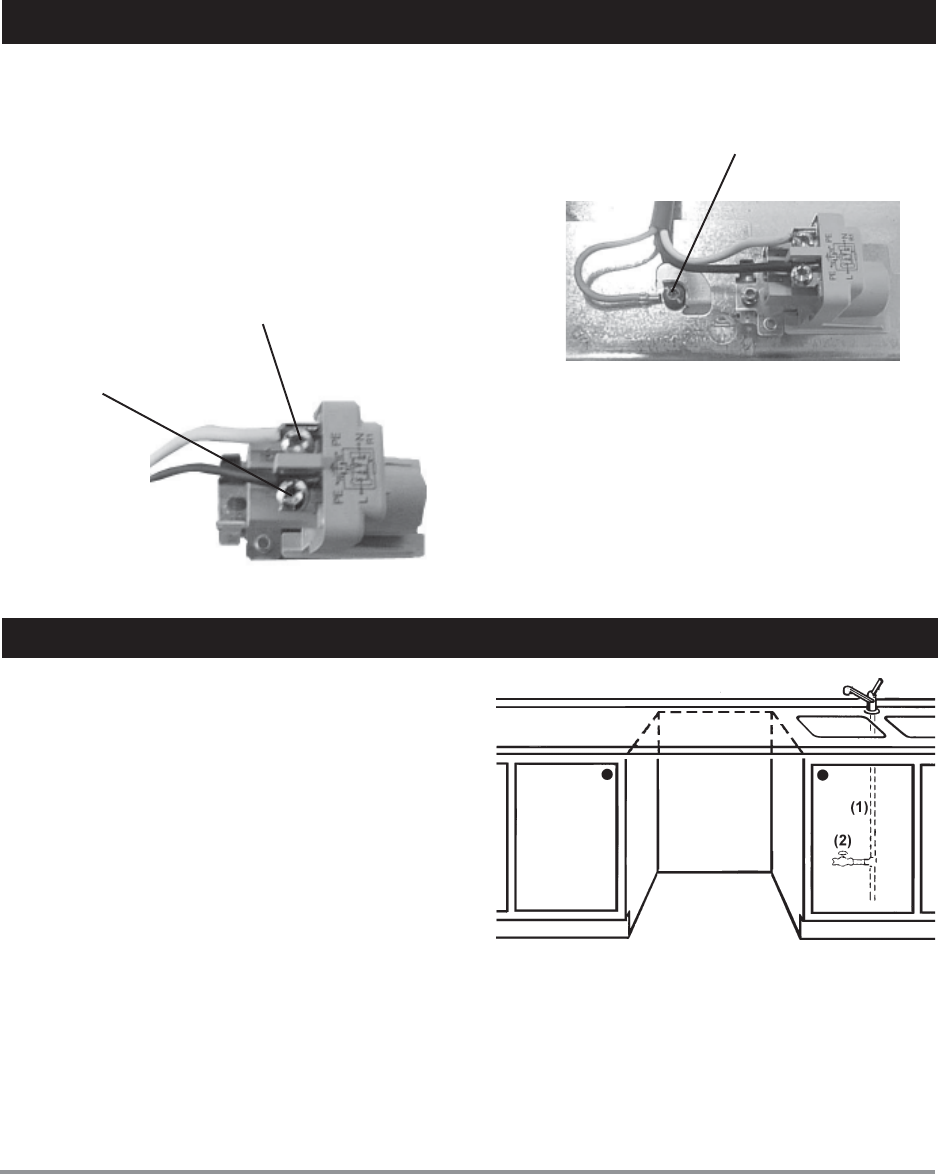
Page 8
TESTING FOR LEAKSTESTING FOR LEAKS
TESTING FOR LEAKSTESTING FOR LEAKS
TESTING FOR LEAKS
1. Turn on the water supply and check for leaks.
2. Turn the power on at breaker/fuse box and test the
dishwasher operation by running a Rinse cycle.
(This should take about four minutes.)
3. Turn off the electrical power and check for leaks
In order to prevent heat damage to the inlet valve, all
solder connections must be made before the water
supply line is connected.
Flush the water supply line prior to connecting it to the
water fill tube.
The unit has a float switch in the base pan to protect
against flooding. If the inlet valve connection is not
seated properly, water may leak into the base pan and
activate the float switch.
It is important that the water supply line and the shut-off
valve have a sufficient flow volume. At last 3 gallons (12
liters) per minute must be able to pass through the
line. The water pressure should be 18-176 psi.
Be sure to run the PEX tubing through the hole
to sink compartment before moving the
dishwasher into position.
NOTE:
under the dishwasher and sink.
4. Make sure that no kinks have developed in the drain
lines.
If there are no leaks and the dishwasher seems to be
working properly, continue with the installation.
CONNECTING CONNECTING
CONNECTING CONNECTING
CONNECTING
THE THE
THE THE
THE
WW
WW
W
AA
AA
A
TER SUPPLTER SUPPL
TER SUPPLTER SUPPL
TER SUPPL
YY
YY
Y
(1) Water supply
(2) Water supply valve
(not supplied)
1. Connect supply cable with
a UL-listed strain relief
bushing (if nonmetallic
cable is to be used).
2. Connect branch circuit
white lead to N lead on filter.
3. Connect branch circuit
black lead to L lead on filter.
WARNING!
Before starting this procedure, be sure
the power is turned off at the breaker/fuse box.
CONNECTING THE ELECTRIC CABLECONNECTING THE ELECTRIC CABLE
CONNECTING THE ELECTRIC CABLECONNECTING THE ELECTRIC CABLE
CONNECTING THE ELECTRIC CABLE
If the cord is not long enough, or if a hard-wire
installation is needed, follow the steps below to
complete the electrical connection.
4. Connect ground wire to ground connection screw
on the bottom.
NOTE:
When doing a hard-wire installation, you must
remove the supplied power cord.














